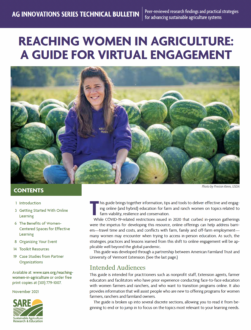Pre-Event: Designing Your Event
Female brains, according to some studies, tend to be well adapted to making connections between analytical reasoning and intuitive processes (Ingalhalikar 2014). Additionally, farm and ranch women bring a wealth of experience to learning events: On average, they are over the age of 50, have diverse on- and off-farm work experience, and their identities encompass a variety of life roles.
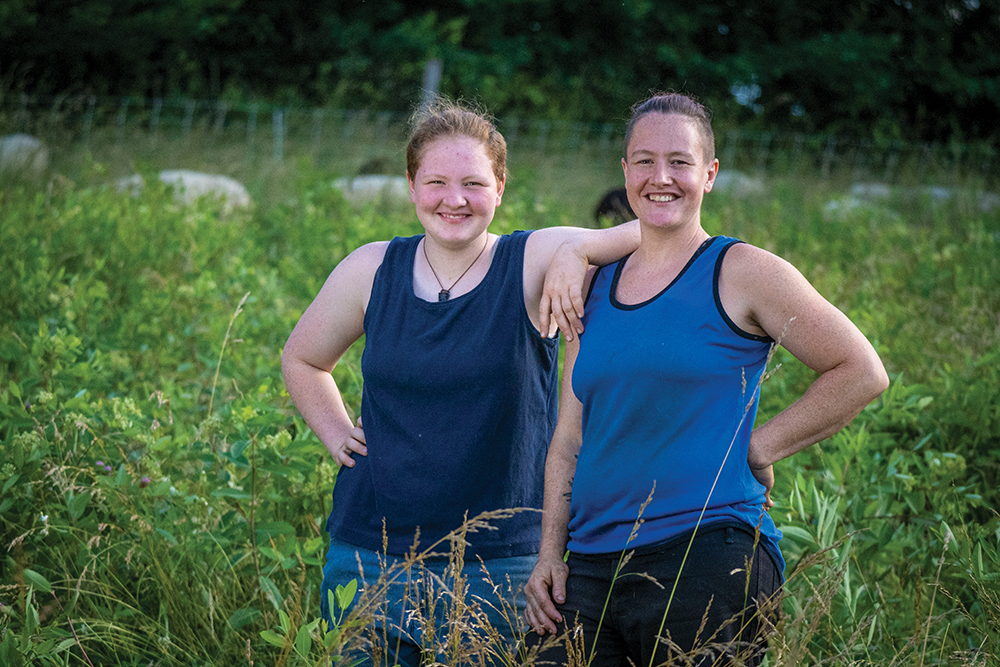
Learning Circles, whether online or in person, provide a rich environment for the kinds of conversations that allow participants to build on existing connections to integrate new information and knowledge.
In the Women for the Land Learning Circles, introductions of each participating individual are used both as a way for all participants to get to know each other and to situate knowledge and expertise so that participants can learn from one another and integrate information from technical experts.
It can be more challenging to provide those kinds of learning experiences in single-session online offerings such as webinars or meetings. Especially when a technical expert is presenting, there can be a strong temptation to fill a session with as much information as possible. Some strategies for providing learners creative ways to assimilate the information include:
- Use breakout sessions to allow for small-group conversations about some aspect of the presentation.
- Provide a short (30–60 seconds) “reflection” break during which learners respond to a simple prompt, such as how the information presented connects with their situation.
- Use the platform’s chat feature and/or polls to allow participants to share how they might use what they are learning.
- Include a farmer who is somewhat representative of the group as a co-presenter who provides a short presentation of how the content “plays out” in their farm—both successes and challenges.
- Show a video of a farm tour or practice for participants to react to and discuss.
In online learning environments, engaging positive emotions requires that learners feel safe. When people feel threatened, the feeling can often shut down their ability to receive and process information, whereas the emotions of joy and pleasant surprise prime the brain to receive and process new information (See “Engage Positive Emotions” in Bell and McAllister 2021). For these same reasons, it may be appropriate to consider getting even more specific with your target audience by developing affinity groups for women who share other intersecting identities such as race, ethnicity, language and/or non-binary gender expression. Zaretta L. Hammond’s book Culturally Responsive Teaching and the Brain: Promoting Authentic Engagement and Rigor Among Culturally and Linguistically Diverse Students explores these issues in regard to K–12 students, but much of the neurological patterns it describes can support the design of effective learning programs for adults as well.
As adult learners, farmers enter learning with a wide range of experiences, knowledge and skills. Their brains are full of long-term memories that serve as scaffolding for new learning. ... When you are aware of the connections farmers make between new content and their lives you can make the content more relatable and target the curriculum to address gaps in experience and knowledge.
Bell and McAllister 2021
When it comes to online learning for women, some participants may be very familiar and comfortable with online environments. Others may experience anxiety over their technical proficiency or having to speak in front of a large group of people they don’t know and can’t read well because of the reduction or skewing of nonverbal cues in a virtual environment. Also keep in mind that farm women are often juggling a range of farm, family and off-farm work responsibilities, and that there may be things happening in the home or on the farm that could be distracting them from full participation.
It’s still critical to provide opportunities for practice and application of core concepts, particularly for your online events. For instance, learning opportunities that allow women to work together to experiment and solve real-life problems are effective approaches (see “Provide Opportunities for Practice and Application” in Bell and McAllister 2021), because they:
- Make learning relevant
- Allow learners to transform information into knowledge and skills
- Foster increasing complexity in knowledge and skills
- Help learners transfer knowledge and skills to new contexts
It’s also important to give women learners opportunities to do research and synthesize information from a variety of resources before making decisions.
As you plan your event, it’s critical to think about how to build in opportunities for learners to have a choice (see “Give Learners Choice” in Bell and McAllister 2021) about aspects of their training, from content development to learning activities and identifying hoped-for outcomes. This might mean changes to the content that you cover, the pace of delivery and/or revisiting your expectations for what your participants will know, believe and do because of participating. Gathering input from your participants ahead of time can help guide implementation during the event itself.
Pre-Event: Promotion and Outreach
As with in-person events, established partnerships with key stakeholders that have pre-existing communications platforms can support the success of outreach and promotion efforts. Set up a spreadsheet or online database to collaboratively track the contacts that you and your team have who can help promote the event. Utilize this centralized place to track who reached out to whom and what the responses were. Consider asking interns, students and other external partners to help you spread the word on social media, as well as through email newsletters of partner organizations. Recruit participants by promoting registration for at least four weeks in advance of the event.
Registration and Reminders
To ensure security in the online setting, it is best to require participants to register ahead of time and to manually approve all registrants before the event. This can reduce the risk of people with malicious intentions from joining the event and causing a disruption (e.g., “Zoombombing”). With this added layer of security, participants will receive a unique link to join the meeting. You can also have them enter a password to join for additional security.
The trade-off to this added security is that registrants may receive the confirmation email from Zoom in their junk box, so it is good to have a staff member follow up individually with participants via email and to call them a day ahead to remind them of the event, confirm they received the join information and clarify the nature of the event. Many people are used to being able to passively engage in online events, such as webinars and meetings, so it is helpful to clarify how your event may be different if you hope to generate conversation, ask for their active participation, or have them on video and audio. Given that many women are often multitasking, it is helpful to provide a heads-up that they are expected/invited to participate actively and to be focused in front of their computer and webcam for the duration of the event, if that is your aim (see “Provide Opportunities for Practice and Application” in Bell and McAllister 2021).
Depending on your target audience, you may need to provide additional support to help women access the online platforms you’re using. One week prior to gathering, you might send instructions on how to join the platform along with their registration confirmation. Include tutorials for folks who need support getting the platform set up on their devices. Potentially host a pre-event call with people new to the platform to help them work out technical challenges.
Video Tutorials on Getting Started With Zoom
These are examples of YouTube videos you can share with farmers that explain how to download Zoom on a smartphone and join a meeting, provided by the CaliWaterAg YouTube channel.
In English: https://youtu.be/RK5krWoOoLU In Spanish: https://youtu.be/QzuKKtAQQ1k
Practice Session
As opposed to in-person events, where an organizer can adjust on the fly, the online event requires a good deal more advanced preparation. Facilitators should consider hosting a practice session for co-facilitators, presenters and discussion leaders prior to the event. During this time, the facilitator can establish guidelines for what to do should the facilitator lose connectivity during the event, who will be designated as a co-host and the roles/responsibilities for leaders involved in the call. A practice session also allows technical experts to test their demonstrations, equipment, sound and space, as well as the features of the virtual platform to be used for the session.
One KEY thing learned (the hard way) in an unrelated virtual event earlier this year and emphasized in [my online Learning Circle] training is to PRACTICE.
Cayla Bendel, Pheasants Forever
Pre-Work
To enhance relationship building and maximize interaction during the event, sending key information or asking participants to begin their learning ahead of the first gathering can help them get acquainted with the format, each other and what to expect during the event (see “Engage Positive Emotions” in Bell and McAllister 2021). If your event has a theme or plans to share in-depth information on a particular topic, you may want to send some questions that will help you to understand participants’ baseline knowledge of the topic and what they hope to get out of the event. You may want to encourage some homework ahead of time, such as viewing informational tutorials about the topics covered in the event, to get them excited and engaged prior to the event. Or you may wish to learn more about their relationship to agriculture, the type of operation they run or their land tenure situation. These can be captured in the registration questions and elaborated on via some pre-work questions (see “Identify Mental Models” in Bell and McAllister 2021).
Presenting virtually is a skill set, and it isn’t necessarily something that is immediately transferable from other settings, i.e., someone who may do fine presenting in a large room via a PowerPoint on a screen can’t necessarily just take that same format and run with it online. PowerPoint slides should be much simpler/less content as attendees are viewing on their computer or even on phones.
Lisa Kivirist, In Her Boots
Along with pre-work, you may consider asking participants to send photos of themselves or their agricultural land/operation. Using a poll in Zoom to get their permission, you can potentially then use these photos of your participants and their land in future marketing. Since in-person events usually yield photos that can be used, this request of participants can be one way to substitute for day-of-event photos.
One or two days prior to gathering, send participants’ answers to the pre-event questions to all participants via email or in an online group (such as a Facebook group). Make sure it’s clear that you intend to share the results of their answers so that nobody is unpleasantly surprised, and generally keep individual answers anonymous.
We learned it is difficult (and frankly unnecessary) to try to do everything in a virtual event. That was a frustrating realization as we can and historically have covered so much ground at in-person field days, including prioritizing and fostering networking and social connections.
Lisa Kivirist, In Her Boots
Event: Managing People in the Virtual Space
It’s important to create a safe space for vulnerability and for difficult conversations in online learning (see “Engage Positive Emotions” in Bell and McAllister 2021). Women-only spaces can often elicit deep sharing by participants, and it’s important to respect that space. We recommend not recording online sessions when there is deep personal information being shared. A good strategy is to record technical service information or more traditional teaching moments in an online webinar and to turn off the recording when folks share personal information and reflection. It’s really important to be transparent about when you’re recording and when you aren’t, and to give folks the option to turn on and off their camera if they don’t want to be recorded.
Tips for Facilitators
Remember that when you’re facilitating a group process online or in person, you have a special role in guiding the group through the agenda. Consider choosing a co-facilitator to help you in doing the work of managing the group process, as it can be a lot for one person to handle. In fact, for virtual sessions, we recommend having three co-facilitators who can help with the agenda and the technical details. Sharing discrete roles between facilitators is critical, including having someone on board who can deal with technical difficulties or other challenges individuals might have that would otherwise derail the group experience (see the discussion on using technology to optimize virtual sessions in “Toolkit Resources”). A facilitator’s role is about working in service of the group process so that folks can meet each other, learn, grow, share and reflect.
Setting the Tone with Introductions
An excellent practice is for the facilitator to set the tone by modeling the introduction first or by asking an experienced co-facilitator to do so. Set your participants up for success by sending in advance a few topics they can use to guide their introduction.
Repeating the guiding questions prior to starting the introductions as well as entering them in a chat box allows participants to both hear and read what’s being asked of them.
One facilitator should then give their own introduction keeping to the format and time limit they’ve asked of their participants and concluding with a final repeat of the questions.
Finally, alerting the woman who will be up next, as well as one person after them, alleviates some anxiety by giving participants time to prepare as their turn approaches. Going alphabetically by first name is an easy order to follow.
Here are some ways you can welcome and engage participants, and set the stage for a productive and supportive online cohort. Not every suggestion will apply to every situation, and you may have other ideas about ways to create a safe learning environment.
- Depending on the audience, length of the session and the season, schedule one or more short (2–5 minute) breaks during which participants can step away from the screen, stretch, use the bathroom, grab a drink/snack, etc.
- Address the limitations and frustrations of technology from the start of the session. Reassure women that at some point everyone will have a screen freeze or will talk while on mute. If facilitators acknowledge that issues can arise due to technological difficulties and that they have a plan to work through them, participants will be much less anxious about the technology and better situated to focus on the content.
- Allocate time for introductions and facilitate the session to make connections between participants' interests and concerns.
- Provide time in introductions for individuals to share their story in relation to a particular session’s content. Allow them to identify things that might be potential distractions for them in that specific time and place. Acknowledge that these concerns are real and important.
- Use breakout/small-group sessions to give women an opportunity to establish connections with each other and to get experience using the platform and technology with a smaller “audience.”
- Model empathy, respect and clear communication. Facilitators may need to work on making their non-verbal cues more visible with bigger actions and reactions.
- Co-create ground rules that set common expectations for how the group will function. Revisit at intervals to fine-tune to meet the group’s needs (see the sample ground rules provided in “Toolkit Resources”).
- Create space through facilitation and ground rules that acknowledges power dynamics and works to reduce them.
- Set out clear expectations for the session (e.g., the agenda, start and end times), and keep the session on track.
- With cohorts that will meet multiple times, allocate some time at the beginning of each session for check-ins. Consider using an icebreaker question that gets everybody contributing, for example: “My favorite thing to do on a snowy winter day is ...”
- Provide an associated platform, possibly through social media or a blog, where participants can share bios, photos of themselves and their farm, and contact information (with participants’ consent).
- Consider providing childcare/elder care stipends for in-home care, or possibly “replacement labor” stipends. Knowing that these things are “under control” can help give space to focus on the online session.
Know Your Audience
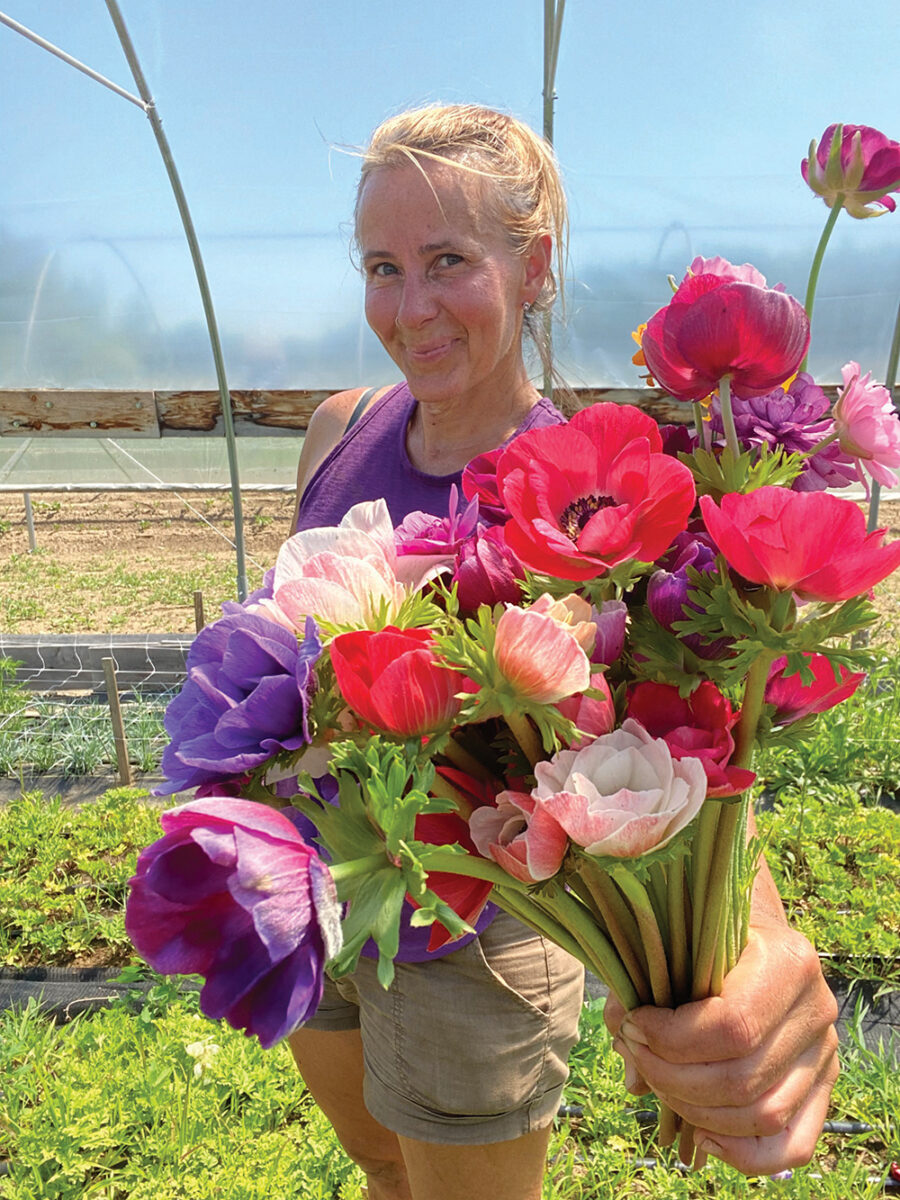
The women who attend online education will arrive with mental models—knowledge, assumptions, beliefs and values—about farming, their land, their role on the farm and themselves as learners. These mental models have been formed by their experiences and will affect how they engage with the topics you’re focusing on. Bell and McAllister (2021) observe that mental models are often tacit—individuals aren’t fully aware of them—and that unless they are known and addressed, new information is unlikely to result in behavior change.
The following are statements gleaned from participants in the AFT Women for the Land program (www.farmland.org/women) that provide insights into their experiences, assumptions, beliefs and values:
- “Taking care of the animals comes naturally to me, but I don’t have a knack for the business plan.”
- “My husband is the farmer. I just manage our staff and keep track of financial records.”
- “My farm is an integral part of the community in this area.”
- “I know I will have a difficult time getting a loan.”
- “I never really thought of myself as a farmer before now.”
- “I feel like there is some kind of secret society I don’t belong to with an alphabet soup of acronyms.”
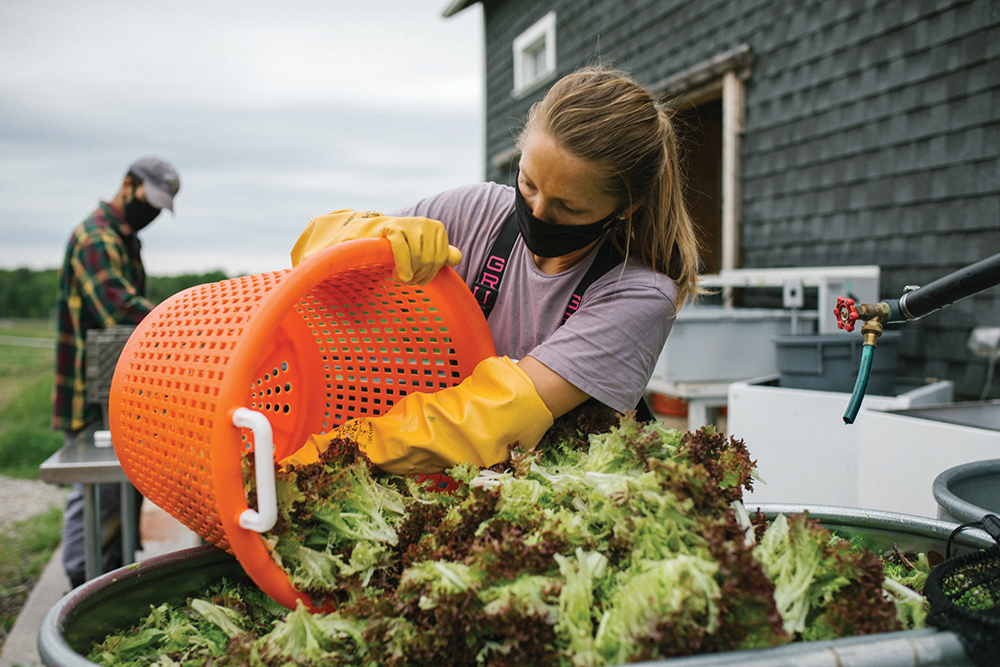
Mental models like these can affect how women will engage with particular topics. There are a variety of ways to begin uncovering participants’ mental models so that participants are acknowledged and their needs are addressed through the program. Facilitators can include questions about expectations, needs and what participants are currently doing. These can be included in registration materials, as a pre-workshop assignment or survey, or embedded in the introductory portion of a session. Sharing that information back with the group and asking participants to respond and discuss the information can be a powerful way to get participants to begin identifying and questioning their own mental models.
It’s also important to uncover the mental models the facilitator and technical experts hold—and those that are embedded in the curriculum—regarding content, learning and learners. What experiences, beliefs, values and assumptions about gender and/or online learning are your participants, presenters and facilitators bringing to the session? How do they support or inhibit your educational goals? Understanding those things can help shape both content and format for a more successful program. See “Identify Mental Models” in Bell and McAllister (2021) for more on this topic.
Post-Event: Evaluations
As part of the post-event work, we recommend spending time debriefing as a team to think about what worked well and what could be improved. For many, increasing the work in the virtual space means learning through practice. This will require iterative learning and an approach that allows for tweaks and changes between events, particularly if planning a series of coordinated events.
As with all group educational events, it’s important to think about objectives and the intended outcomes associated with the event or convening. What information are people to walk away with? Is the event designed to help change knowledge, attitudes, intentions or behaviors around specific practices? Establishing clear learning goals and indicators at the start of your planning process sets the stage for implementing practical and meaningful evaluation activities to document outcomes and identify ways to improve your programs and process. In many cases, these pieces have been developed for in-person events and thus can be modified and adapted for the virtual environment. If you’re just getting started developing an evaluation framework or are thinking about updating it, the Gaining Results through Evaluation Work project at the Center for Agroecology and Sustainable Food Systems (University of California, Santa Cruz) has compiled an extensive online library of resources relevant to evaluation of farm and agricultural programs. It includes the guide Identifying Outcomes for Program Evaluation, which provides example outcomes, indicators and data collections.
We recommend you gather some evaluation information before the close of your meeting. You can do this through a virtual poll (see Zoom’s polling feature, for example) or simply by asking folks to reflect and share one thing they learned to wrap up the meeting. Use a chat box feature if time doesn’t allow for a live discussion.
You’ll most likely want a follow-up evaluation, either via an online survey tool or a paper copy that you mail to participants. However, mail-in evaluations are costly from a time and resource perspective; an online survey of some kind is recommended with a few email reminders to boost response rates. You can achieve anonymity in an online evaluation tool by not requiring people to leave their name/contact information, and for most online tools you can click a box so that you aren’t collecting IP addresses. It’s important to be transparent with respondents if the evaluation tool is designed to be anonymous rather than just confidential. It always helps to explain how the information is used and why it’s valuable to you as you plan future events.
Another option is to develop a questionnaire and have staff call participants to conduct a phone interview. With this route, be aware that anonymity is hard to achieve unless an outside evaluator conducts the interviews.
For me, the loss of evaluation data discerned by watching the participants during the day is very problematic in understanding how effective the training is. Relying only on an online survey means an additional loss of data if participants don’t reply.
Jean Eells, E Resources Group, LLC
As with all things associated with evaluation, have a plan in place before your event and be thoughtful about ensuring collection of information to aid in tracking intended outcomes. Be prepared to receive a smaller response rate with virtual evaluation tools due to their optional nature; consider doing follow-up interviews if you need a higher response rate than what online tools are giving you or if you’re seeking more qualitative input.
Post-Event: Participant Follow Up
The final piece is to follow up with participants. A great deal of work went into developing their relationships in the group, but participants in online programming may find it challenging to sustain these connections without your facilitation. Due to the shortened nature of online events and the lack of built-in networking times such as coffee breaks and lunch, a facilitator has to be creative in keeping their participants connected.
You can encourage continued networking in a number of ways, depending on what participants request. For example, you can establish private groups on social media for members or share a participant email list with permission.
In-person learning circles often provide a resource table for participants to access informational materials. In the absence of this, one of the facilitators should be aware of participants looking for more information on a topic during discussion and should follow up with those resources. The same is true for access to the technical experts featured during the session. Allow time after the official session for one-on-one questions with the expert, or offer a method of contact, if possible. Most technical experts are happy to share their email and provide any supplemental support to those in attendance.
Informal Engagement Ideas
Check out the virtual “office hours” that Soul Fire Farm hosts with their Ask a Sista Farmer programming on Instagram Live (https://www.instagram.com/soulfirefarm/) during which, every first Friday of the month, “experienced Black womxn farmers” answer questions about all manner of farming and food preservation. Older recordings are also available on their Facebook page (www.facebook.com/soulfirefarm/events).
Facilitators should send a follow-up email to participants (including registrants who did not attend) and provide resources from the meeting. These can include, but are not limited to:
- A recording of the meeting (if you’ve been transparent with participants ahead of time that this would be shared)
- A copy of slides/handouts and technical information covered in the discussion
- A contact list of all participants to support their continued networking
- Links to resources mentioned during the session
- A contact list of relevant technical service providers and clear information about where to go next for more information, support, resources, etc., including a breakdown of common agency and program acronyms they may encounter when seeking technical support
Sample follow-up email language and examples of resource lists used by AFT are provided in the “Toolkit Resources” section of this guide.
Virtual Networks on Social Media
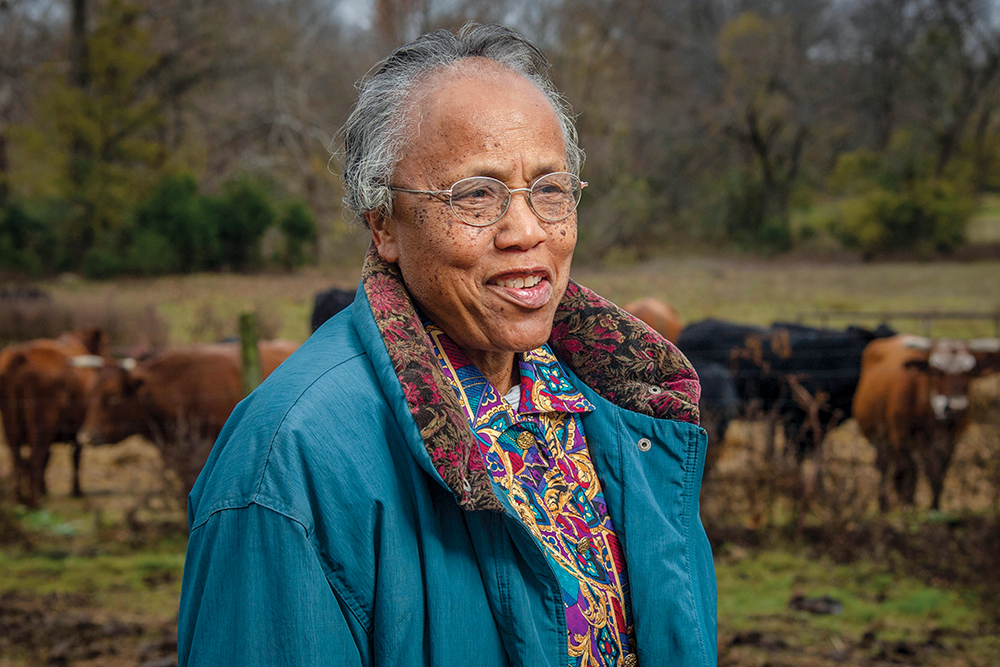
Facebook groups, Google Groups, Mighty Networks or other online platforms can help to support women in staying connected after events. GreenMaps and Google Maps are free tools that allow people to create maps of locations and add details about the locations. These can be good tools for supporting women to self-organize and create a network organically over time.
If these are too onerous to create, continued engagement via your organization’s own social media accounts (Twitter, Instagram and Facebook) can keep the conversation going with women in agriculture in your communities. International Women’s Day, Women’s Equality Day and other national celebrations are good opportunities for “social media takeover” days when your team can focus on a communications campaign to engage and solicit input from women in agriculture. Efforts like this are good ways to help amplify women-led farms and ranches online by leveraging the platforms of your organization or institution to highlight the work and perspectives of women you serve. You could also consider doing virtual “office hours” using a social media platform such as Instagram or Twitter, or simply have Zoom “office hours” for people to log in and engage.
